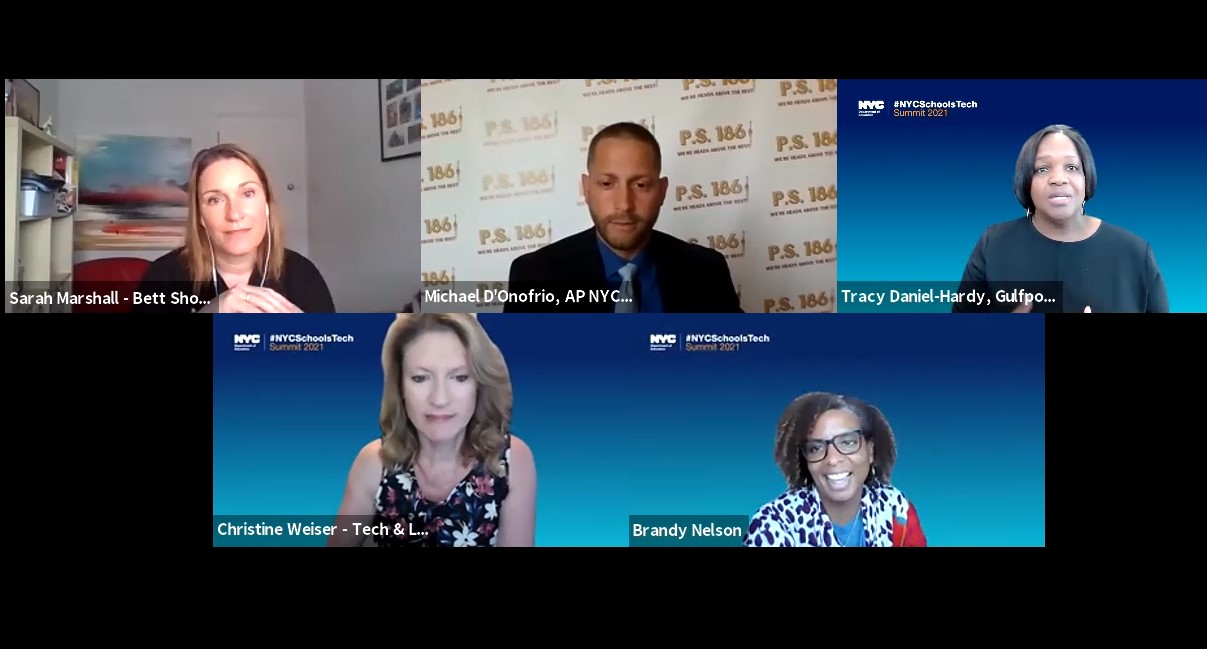Social-Emotional Wellness: ‘Put Your Own Oxygen Mask on First’
Social-emotional wellness and updated practices in post-pandemic teaching

With the challenges and disruption of the last 18 months, there is new awareness and commitment to the importance of health and wellness of teachers, staff, and students.
“You have to put your own oxygen mask on first before you can help others,” said Dr. Brandy Nelson, executive director of learning and teaching, Charlotte-Mecklenburg (NC) Schools, during the recent NYC Schools Tech Summit (watch free on-demand), hosted by Tech & Learning. The virtual event explored how educators and leaders are focusing on wellness and shifting their approach to technology as they prepare for the new school year.
In Charlotte-Mecklenburg Schools, there is a commitment to staff health and wellness as they return to support students. “Even with professional development, we need to ask if we’re doing it from a place that honors belonging, partnership, and wellness for the staff,” Nelson said. “Then in partnership, we can support our students with wellness initiatives and strong instruction.”
The other panelists -- including Dr. Tracy Daniel-Hardy (director of technology at Gulfport School District), Michael D’Onofrio (assistant principal, PS 186, New York City Schools), and Sarah Marshall (global head of content for BETT, the world’s leading education show) -- discussed how education leaders are rejecting old assumptions, such as “learning only happens at school,” “classroom seat time is required for learning to occur,” and “teachers control how learning happens.”
Although their approaches differed, the educators agreed that the pandemic has provided an opportunity for schools to transition to new teaching approaches and learning experiences in which social-emotional wellness is at the core for both students and teachers.
Access to technology continues to be the pre-eminent equity challenge for many districts, although relying on well-trained teachers who are supported with ongoing professional development still is the most important ingredient for success in the classroom.
Key Takeaways
- Social-emotional wellness is a key focus for teachers, staff, and students, particularly coming back together in person after 18 months.
- Educators are focused on finding the best ways to support SEL, equity, diversity, and inclusiveness while delivering core curriculum.
- Reconsider all your assumptions about teaching and learning and whether or not it is still actually true, such as seat time is equated to learning.
- Defining and monitoring student success is critical, so developing effective systems around that is crucial.
- Getting technology was a focus last year, so now leveraging it to support strong instruction is the key to the year ahead.
- Focus on rigor, relevance, and relationships for good outcomes.
Revised Learning Plans and Practices
Dr. Brandy Nelson
Tools and ideas to transform education. Sign up below.
Over the past year we learned that learning can happen anywhere/anytime; seat time is not required for learning to occur; and students should control their learning. We have to create spaces and opportunities for that. Our core work is strong instruction, so we need to make sure our content is strong and aligned to standards and that we understand how to use technology effectively to support the work, now that it is a major player in our learning models.
Dr. Tracy Daniel-Hardy
The technology seemed to overshadow some of the teaching and learning last year, so this year we are going back to basics. We want to emphasize that there is nothing more important than good teaching and that teachers are the most important part of the puzzle in educating our children. Technology, like any other teaching and learning tool, is a means to an end, but we can’t talk about technology in isolation. It is part of how we are going to support the programs we’re using, and students need to have the appropriate devices to participate in our programs.
Michael D’Onofrio
Even before the pandemic, our district had begun a push for social-emotional learning by expanding our team with a counselor. Students learn a different social-emotional trait, such as empathy or mindfulness, each month, and we offer yoga as one of the options for students. At our school, students spend the first 20 days of the year getting to know one another and their teachers, building relationships with each other, and working together to learn these traits. Each school may do it a little differently, but we’re building relationships from the classroom level all the way up to the district level.
Sarah Marshall
The recent tech integration as a result of the pandemic is helping us rethink teaching and learning. We’re considering what has worked and what should be continued, but with staff well-being and workload fully in mind as we help teachers recover and find a better way through. For example, online parents’ evenings have been broadly embraced and I don’t think many schools will return to face to face. Even though the pandemic has been very stressful, it has led us to some new ways of doing things.
Annie Galvin Teich has more than 25 years' experience in education writing and publishing. She is an edtech industry expert in content marketing and copywriting. As a regular contributor to Tech & Learning she focuses on the information needs of district decision makers.
